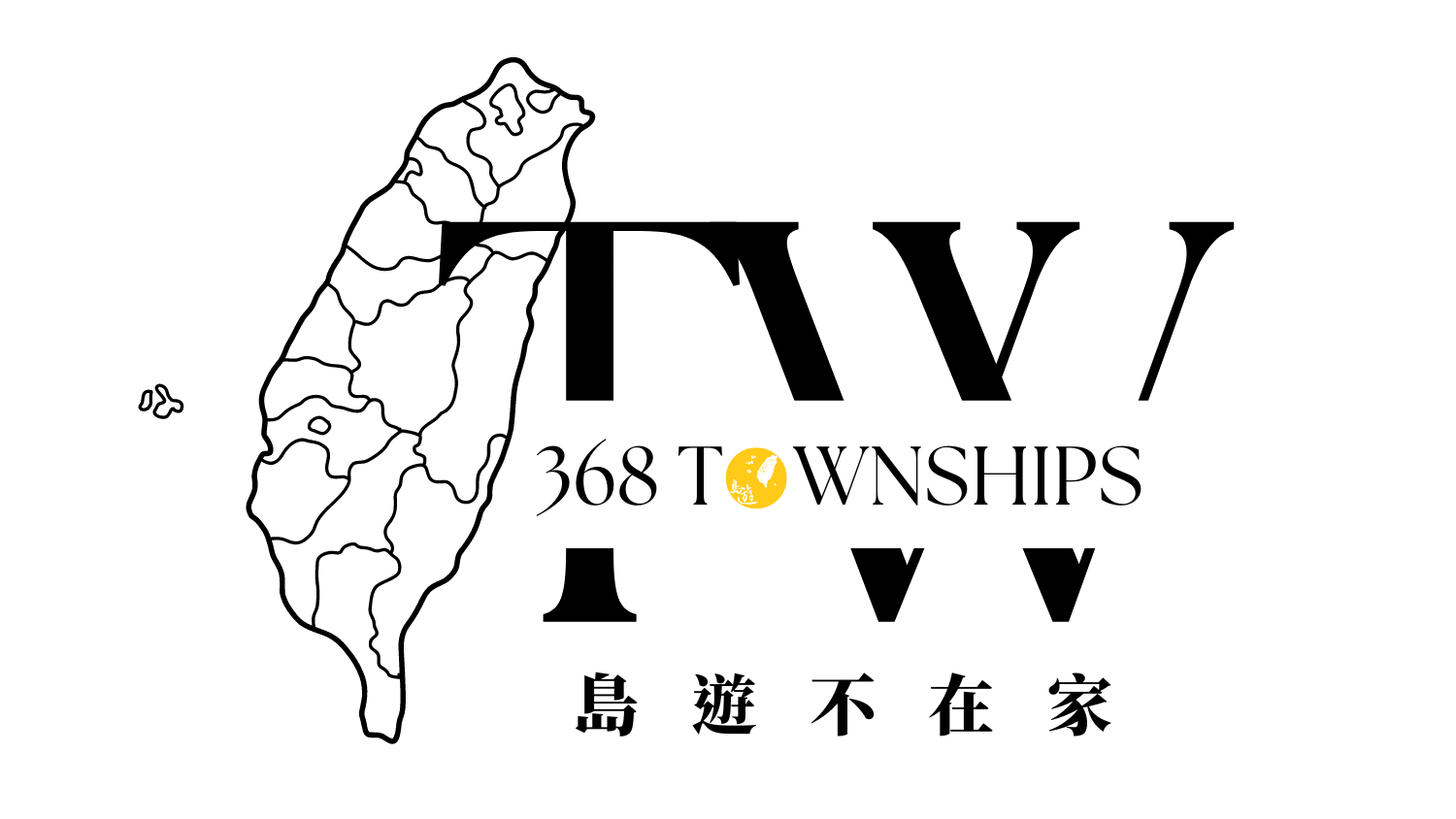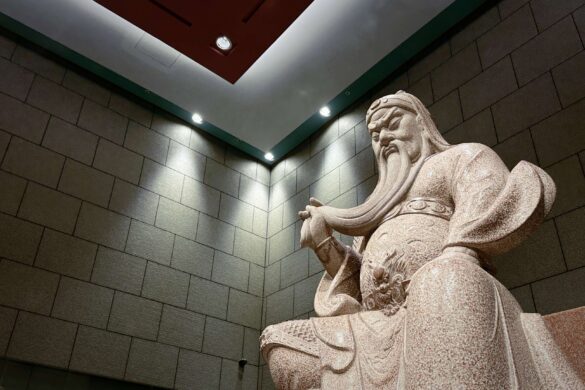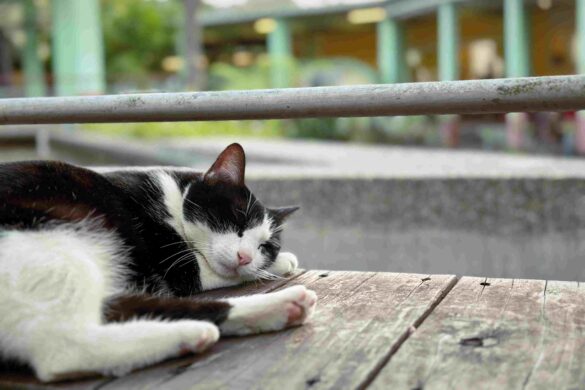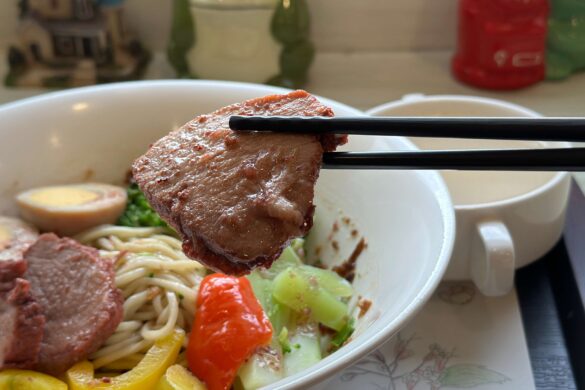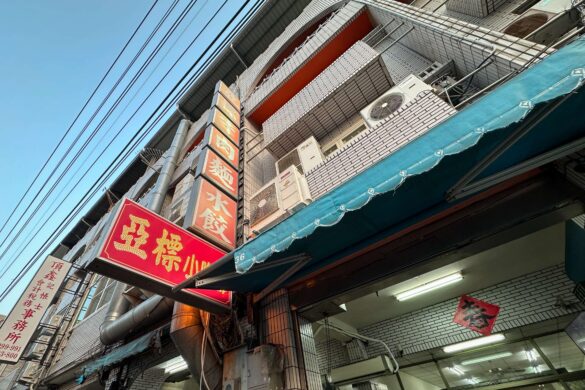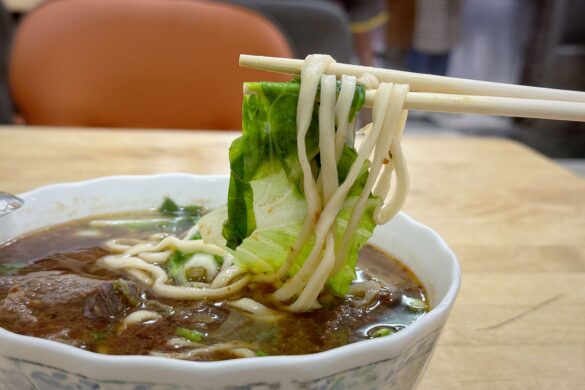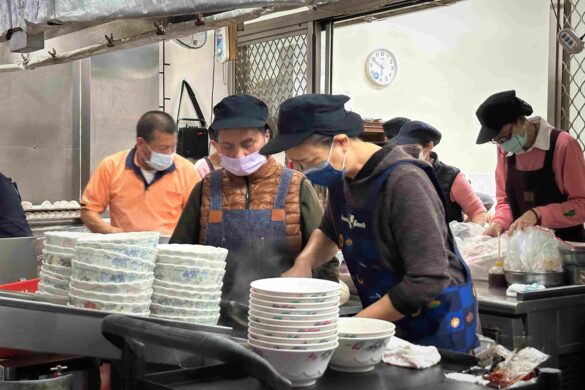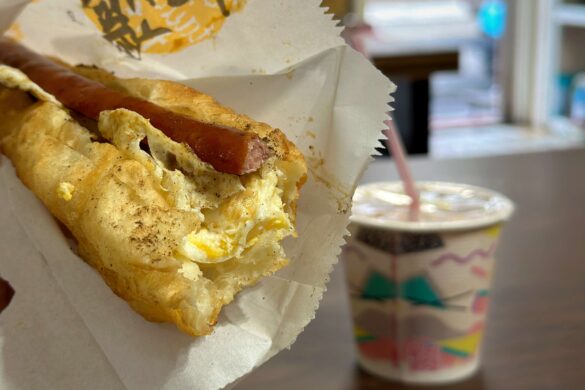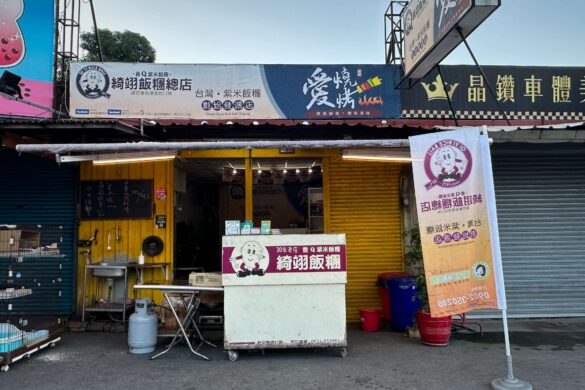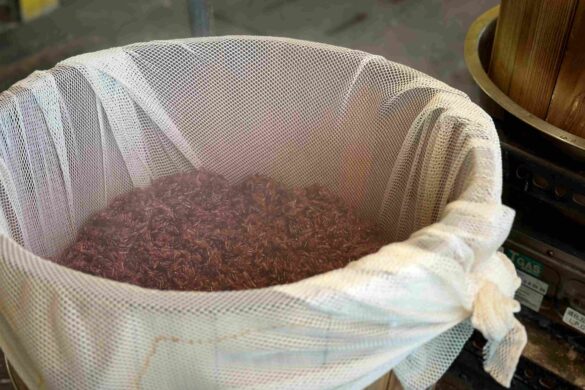Every summer, I find myself drawn to the mountains. When the city becomes hot and stuffy, the cool, refreshing air of mountain towns instantly revitalizes me. Among them, Puli is my top choice for a summer retreat. But Puli is more than just a beautiful town with a stable climate—it’s also a place where locals are dedicated to preserving traditional crafts and culture. Its richness and depth always make me want to stay a few extra days.
Contents
◦ Nantou Travel Guide
01|Transportation in Nantou
🎫 Taiwan PASS for Taiwan Railways + MRT + Taiwan Tourist Shuttle
🚌 Shared Shuttle Bus between Taichung and Sun Moon Lake
🚌 Hehuan Mountain Dark Sky Park
🛥️ Sun Moon Lake Boat Ticket
🚲 Sun Moon Lake Biking Day Pass in Nantou
02|Popular Attractions in Nantou
🎫 Formosan Aboriginal Culture Village Ticket
🎫 Sun Moon Lake Ropeway Ticket
🎫 Qingjing Skywalk and Swiss Garden Ticket
🎫 Cona's Chocolate Castle Ticket in Nantou
🎫 JOJOZOO Park in Nantou
🎫 Aowanda National Forest Recreation Area Ticket in Nantou
03|Things To Do in Nantou
🌲 Sun Moon Lake & Cingjing Farm Day Tour
🚣 Sun Moon Lake SUP Experience in Nantou
◦ The Past of Puli
Before the Qing Dynasty, Puli was home to Indigenous tribes, with the Bunun people in the south and the Atayal people in the north, collectively known as the "Pumei Fan." Being an inland area, Puli Basin was developed much later than the western plains. During the Ming and early Qing periods, the government prohibited Han Chinese from entering to avoid conflicts with Indigenous groups. As nearby areas became settled, some Han people began secretly moving into Puli. In 1815, Guo Bainian and his followers launched an armed invasion. After expelling them, the authorities erected a prohibition stele to reinforce the ban. To protect their land, the Pumei Fan invited the Pingpu people to settle and form an alliance against the Han settlers. However, the rapid growth of the Pingpu population led to their dominance over the Pumei Fan, and Han migration continued to reshape the region’s demographic structure.
By the 1850s, the Han settlers sought to integrate by adopting Indigenous customs and requesting a name change. Eventually, they were allowed to settle permanently, leading to the formation of "Puli She." Recognizing the town's growing importance, the Qing government officially declared the start of its administrative development in 1875, establishing Puli as a key center in central Taiwan.
◦ Attractions in Puli
01|BaoHu Dimu Temple
When it comes to Taiwan’s temples, BaoHu Dimu Temple ranks among my top three for its sheer grandeur! It is the only temple in Taiwan with a green glazed tile roof, a color that exudes a sense of calm and stability. Combined with its traditional palace-style architecture, standing in the plaza and gazing at the distant mountains gave me an exhilarating feeling—almost like ruling over the land.
This temple is dedicated to Dìmǔ Niángniáng, a deity unique to Taiwan. She is regarded as the counterpart to the Jade Emperor, symbolizing the Earth's nurturing power and the endless cycle of life.
BaoHu Dimu Temple Opening Hours: 0600-2100 No. 94, Pipa Rd., Puli Township, Nantou
02|Chung Tai Chan Monastery
Chung Tai Chan Monastery is an architectural masterpiece, built primarily with solid stone to represent the unwavering spirit of Buddhist practice. From the side, the structure resembles a meditating monk—calm and composed. From the front, it looks like a jet about to take flight, dynamic and full of energy, embodying the Zen concept of transcendence. This ingenious design seamlessly blends tradition with innovation, creating a sacred space that is both solemn and forward-thinking. It’s no wonder that countless devotees and travelers come here on pilgrimage.
Stepping inside, I was overwhelmed by the intricate details—statues, murals, carvings, and paintings—each so mesmerizing that I was afraid of missing even a single element.
Chung Tai Chan Monastery Opening Hours: 0800-1700 No. 2, Zhongtai Rd., Puli Township, Nantou
03|Guang Xing Paper Mill
Puli's papermaking history dates back to the Japanese colonial era. At its peak, the town was home to more than 50 paper mills. In 1965, founder Huang Yao-Dong established Guang Xing Paper Mill during the golden age of the industry. Thanks to Puli’s pure, iron-free water, the paper produced here had exceptional quality, resisting yellowing over time. This allowed handmade xuan paper to be exported to Japan and South Korea. As times changed, the traditional paper industry struggled against mechanization, forcing many mills to shut down. However, Guang Xing Paper Mill chose a different path, successfully transforming into a cultural tourism factory, where visitors can experience the art of handmade papermaking.
Their dedication to cultural preservation is impressive. Guided tours run every 30 minutes, offering an in-depth look at the process—from raw plant materials, pulp preparation, and hand-papermaking to pressing and drying. Watching each step unfold, I couldn’t help but admire the craftsmanship and dedication of these artisans.
The hands-on experience area is just as fascinating. The paper rubbing (拓印) section alone had so many stamp designs that I found myself overwhelmed with choices, reluctant to leave this space filled with the rich scent of paper and ink.
Guang Xing Paper Mill Opening Hours: 0900-1700 No. 310, Tieshan Rd., Puli Township, Nantou
04|Paper Dome
Before visiting the Paper Dome, I was curious—was it a church made entirely of paper or an exhibition of paper art? It turned out to be much more than that—a symbol of international friendship and post-disaster resilience. The Paper Dome was originally built in Kobe, Japan, after the 1995 Great Hanshin Earthquake. The 7.2-magnitude quake devastated countless homes, even burning down a local church, leaving only a surviving statue of Jesus. In response, renowned architect Shigeru Ban proposed using paper tubes as construction materials to build a temporary gathering space, providing survivors with a place of solace and healing.
Four years later, Taiwan faced its own tragedy—the 921 Earthquake—which caused widespread destruction. During this difficult time, volunteers from Kobe came to Taiwan, working alongside local volunteers to assist in relief efforts and share post-disaster rebuilding experiences. In 2005, to commemorate the 10th anniversary of the Hanshin Earthquake, the Paper Dome was carefully relocated to Taiwan after two years of planning. Supported by 58 paper columns, the structure allows natural light to filter through, creating a soft, sacred ambiance.
Beyond the church itself, the surrounding environment is beautifully preserved, fostering a sense of harmony between architecture and nature. Walking through this peaceful space, I felt a deep connection to both the land and the human spirit.
Paper Dome Opening Hours: 0930-1700, closed on Wednesday. No. 52-12, Taomi Ln., Puli Township, Nantou
◦ Restaurants and Snacks in Puli
01|Maahapet
When it comes to restaurants inside tourist attractions, I usually keep my expectations low. However, Maahapet, located within Paper Dome, completely changed my perspective. Their grilled pork noodle soup was a pleasant surprise—fresh, naturally sweet vegetables, chewy noodles, and tender, juicy pork that wasn’t dry at all. Every ingredient reflected the chef’s dedication to quality, creating a dish that was well-balanced and deeply satisfying.
MaahapetRestaurant Opening Hours: 0930-1700, closed on Wednesday. No. 52-12, Taomi Ln., Puli Township, Nantou
02|Yabiao Noodle House
"Don’t order the large bowl—you won’t be able to finish it." That was the strong advice from my guesthouse owner when recommending Yabiao Noodle House, a beloved local spot for beef noodles. Before I left, he reminded me again that the large bowl was far bigger than I might expect. When I arrived, I noticed nearly every table had a bowl of beef noodles, and suddenly, I understood what he meant. The large size looked more like a family-sized serving! I played it safe and ordered a small bowl, but when it arrived, it was already what I would normally consider a large portion.
But Yabiao isn’t just about generous portions—it’s the flavor that keeps locals coming back. The beef broth, infused with satay sauce, had an irresistible umami aroma, making every sip rich and savory. The springy white noodles absorbed the broth beautifully, carrying a delicate satay fragrance that made every bite incredibly satisfying. As for the beef, the portions were so generous that by the time I neared the end of my meal, I found myself thinking, "Wait… there’s still more?" Add in the free garlic available for extra punch, and the only way to sum up my experience is—absolutely worth it!
Yabiao Noodle House Opening Hours: 1030-1500, 1630-2000, closed on Wednesday. No. 13, Yuying St., Puli Township, Nantou
03|Puli Fried Youtiao
Another recommendation from my guesthouse owner was Puli Fried Youtiao, a breakfast specialty you can only find in Puli. Located right across from an elementary school, the shop gets busy early in the morning with locals grabbing a quick bite. Unlike the crispy, hollow youtiao found elsewhere, Puli’s version is deep-fried to perfection, creating a fluffy, crispy exterior with a chewy, springy inside—it actually reminded me of the texture of fried scallion pancakes with egg. Topped with a sprinkle of pepper, then stuffed with a fried egg and sausage, this unique salty youtiao won me over instantly!
Puli Fried Youtiao Opening Hours: 0630-1000, closed on Tuesday. No. 9-10, Nanxing St., Puli Township, Nantou
04|Qiyi Rice Ball
At first glance, Qiyi Rice Ball doesn’t look like much, but their purple rice balls are a beloved breakfast choice among Puli locals. As I stepped closer, I saw a steaming wooden rice barrel, with fragrant purple rice releasing waves of inviting warmth.
Even after a one-hour ride to Sun Moon Lake, my rice ball was still warm. With my first bite, the savory mix of pickled mustard greens and pork floss blended beautifully with the soft, slightly sticky purple rice, creating a flavorful and satisfying start to the day.
Qiyi Rice Ball Opening Hours: 0600-1100 No. 81-2, Bade Rd., Puli Township, Nantou
05|Feeling18 LAB
If you're looking for a sweet treat or a relaxing afternoon tea in Puli, Feeling18 LAB is my top choice! The airy, high-ceilinged space is designed for relaxation, allowing sunlight to stream into every corner. On one side, there's a beautifully arranged pastry and coffee display, while the air is filled with the warm, inviting aroma of freshly baked goods and hand-brewed coffee.
My personal favorite is their "Cream Box"—a thick slice of soft, fluffy milk bread paired with their special aged fresh milk spread. Taking a sip of black coffee between bites of this rich, creamy delight? Absolute perfection!
Feeling18 LAB Opening Hours: 1000-1800 No. 69, Taonan Rd., Puli Township, Nantou
◦ Flying Over Taiwan
*All aerial photography operations are conducted within legal airspace. During flight, regulations stipulated by the Civil Aviation Law are strictly followed, maintaining the required distance from buildings and crowds. Zooming and post-production techniques are used to ensure compliance, making the flights fully legal.
*Anyone citing these images and text must provide proper attribution. Unauthorized or illegal use of the images and text is prohibited and may result in legal liability.
◦ Other Areas in Nantou
➤ Xinyi | A Popular Destination for Viewing Plum Blossoms
➤ Yuchih | The Enchanting Homeland of Black Tea
